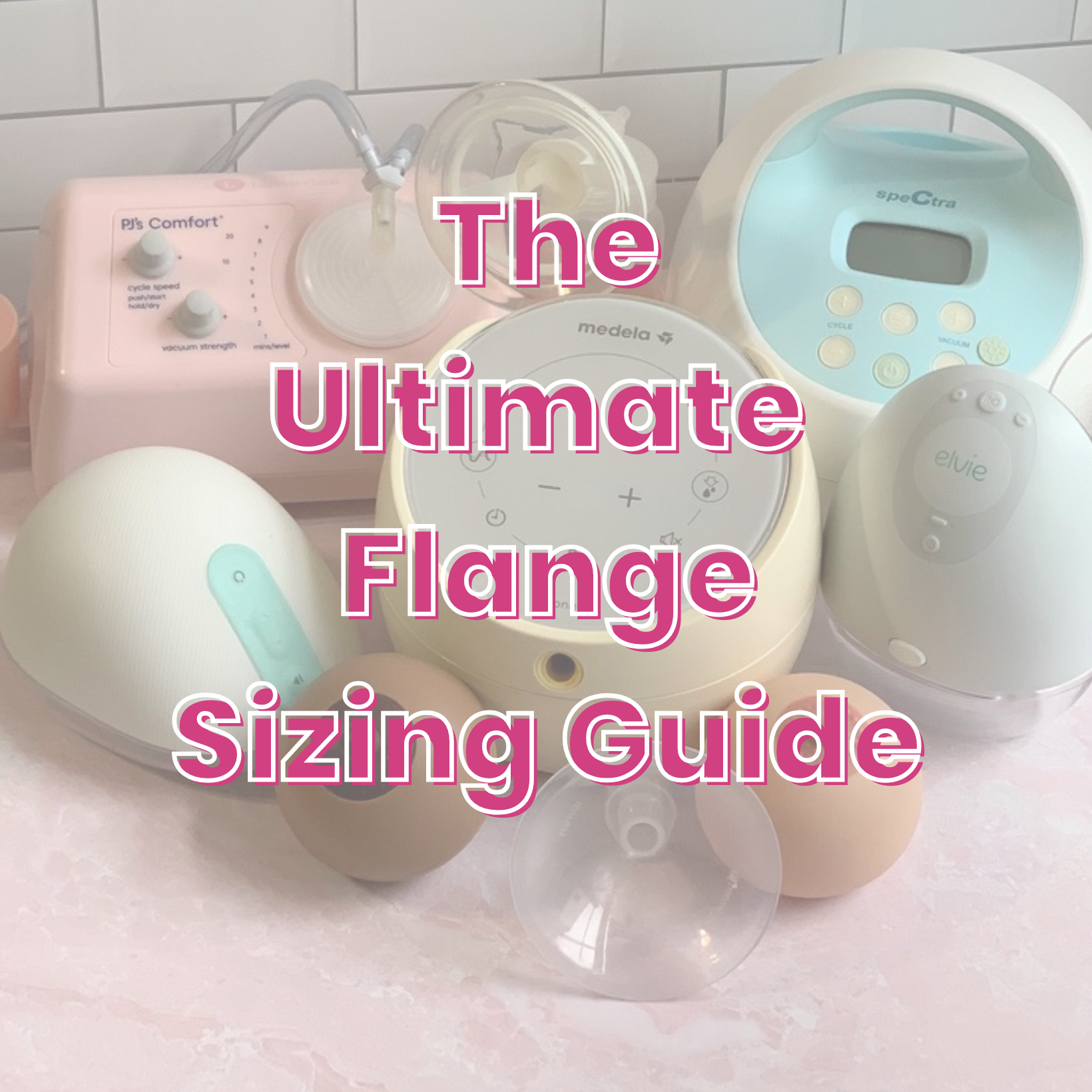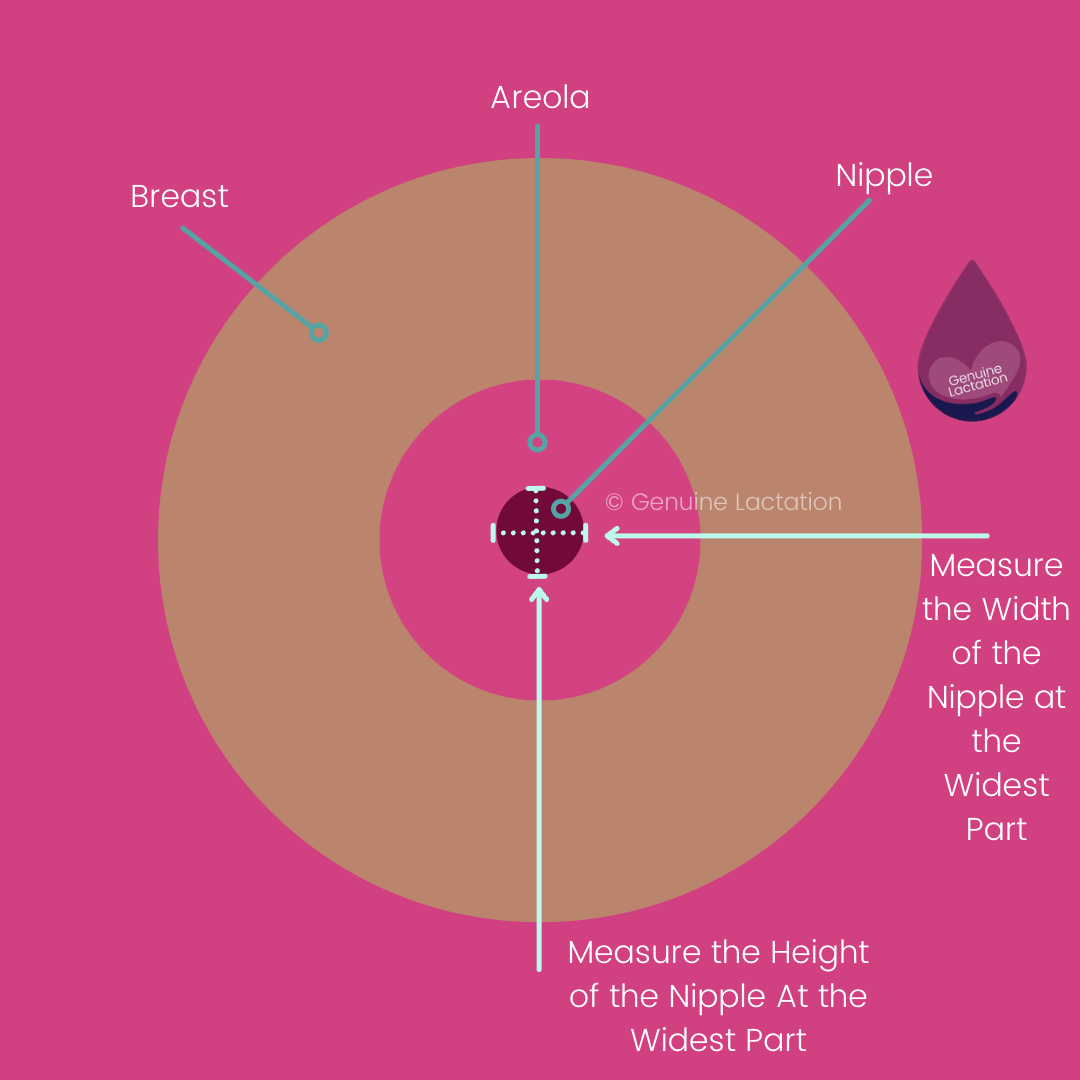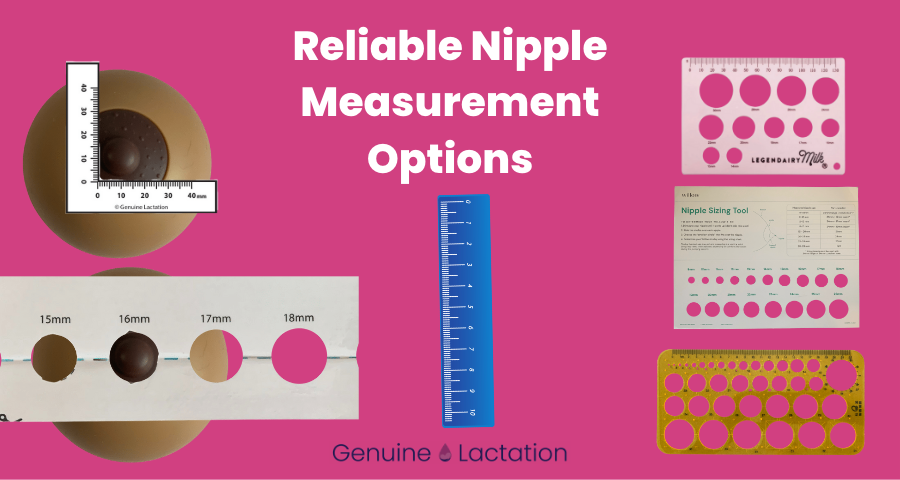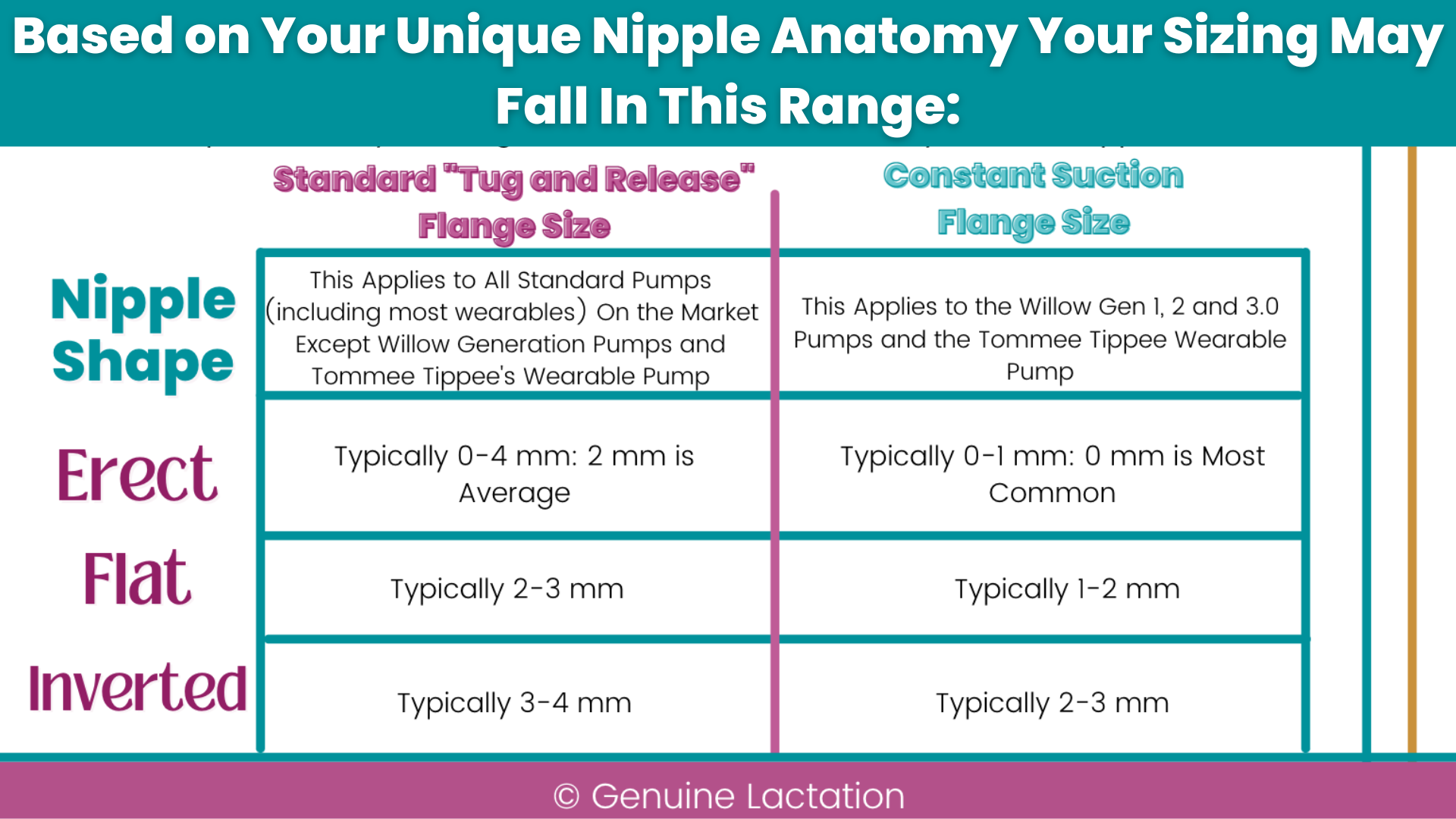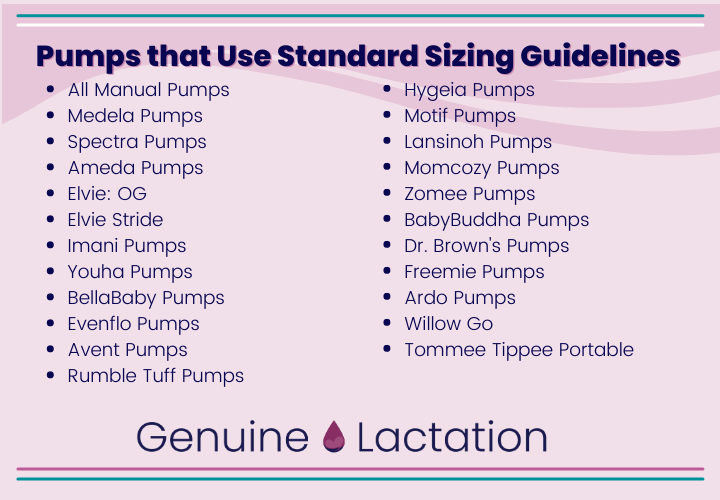Flange Sizing Does Not Have to Be A Mystery Anymore! You Can Find Your Perfect Flange Size For ALL Breast Pumps HERE.
Flange sizing has been treated as a big mystery and a lack of tracking data leaving professionals relying on flawed methods, and parents suffering with poorly fitting flanges. It genuinely does not have to be this way.
The method I’m going to lay out for you here is one rooted in the data tracked with thousands of parents who are comfortably sized for all of their pumps. Follow these instructions step by step, read the resources, take the time to get this right.
This is the Flange Sizing Guide you NEED in your life.
The key to getting the right size flange for your pumping needs is starting with a good measurement of your nipple
Nipples are stretchy, elastic, erectile tissue. When you latch a baby to the breast your nipple will expand by roughly 2 millimeters width wise and 2-3 times in length. That is some serious stretch!
In order to get an accurate measurement to use this calculator for recommendations:
Measure your unswollen nipple- so measure 2 hours after last pumping or one hour after last nursing.
Hand stimulate your nipple
Measure the height and width of your nipple: For this you will be using the largest measurement as your base nipple size.
Use a reliable nipple measurement tool
Check the shape of your nipple when hand stimulated- that is the shape of your nipple to consider here.
Getting this measurement is the key to getting your flange sizing dialed in! Take your time, measure with a reliable tool, and if you are not confident reach out for help today!
What to Know About These Recommendations:
This sizing recommendation calculator is giving you a basic starting point based on your self-measurement for postpartum sizing of healthy, undamaged nipple tissue. If your nipples are swollen or damaged you need to address that before these flange sizing recommendations are likely to work well. You can book for a virtual consultation to eliminate your pain and damage here. Prenatal sizing is more complicated- there is a Genuine Lactation On-Demand™ Prenatal Flange Sizing Calculator if you are trying to determine flange sizing before your baby arrives.
The Type of Suction Determines Your Flange Sizing Needs
Why do different pumps use different sizing standards?
Standard “Tug and Release” Sizing
Constant Suction
How Should a Breast Pump Flange Fit?
Despite the fact that most breast pumps come with 1 or 2 sizes of breast flanges (typically a 24 mm and a 27/28 mm) sizes for available breast flanges range from 13 mm to 40 mm, and many women require a different size from the standard 24/27/28 to be able to pump comfortably while fully emptying their breasts. Getting the proper breast flange fit can make a world of difference in your pumping experience.
The proper breast flange fit is one that:
Allows the nipple to fit easily into the flange tunnel
Does not pull more than 2-3 mm of areola into the tunnel
Is comfortable when pumping
Empties your breasts fully
Does not cause pain or nipple damage
Want to DIY your Flange Sizing…but in a guided way with IBCLC guided videos and calculators? Click below!
So what about elastic nipples?
Elastic nipples are a frequent topic in online breastfeeding support groups! Elasticity of the breast and nipple tissue is completely normal, when nursing this poses no issue, but with pumping it can make finding the right flange slightly tricky. Depending on how elastic your tissue is your nipples and areola may stretch into parts of the flanges that restrict milk flow and can be a source of pain and nipple damage. With elastic nipples the goal is to get a flange size that allows your nipples to expand properly, but does not restrict expansion so much as to cause pinching, nor allow such great expansion as to cause pain and damage.
What you want to avoid is assuming you have elastic nipples and sizing down too small when you are currently using overly large flanges. This greatly increases your risk of tissue trauma.

